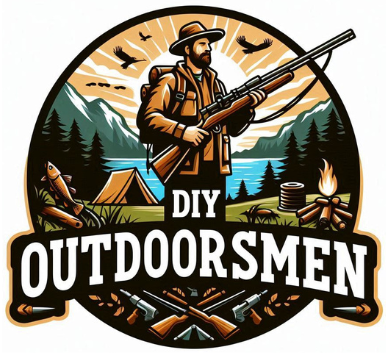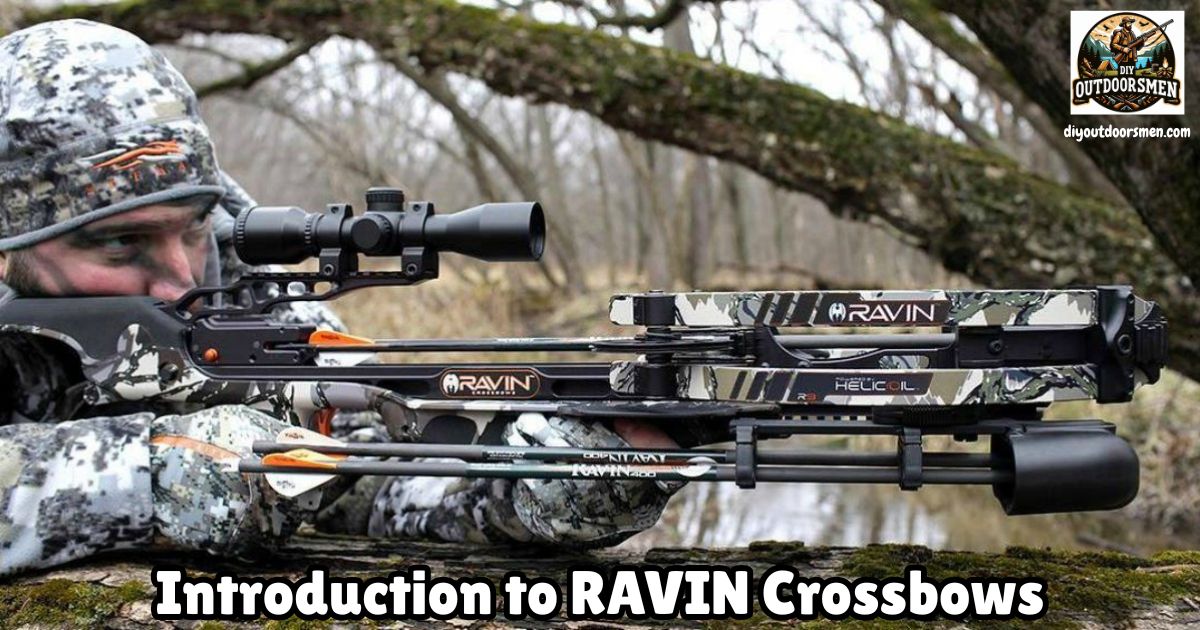Contents
Ravin crossbows have a reputation for precision, compact design, and modern technology. For someone trying to get into crossbow shooting, making sense of all the options and features can feel a little overwhelming.
QUICK LOOK: Beginner Considerations for Ravin Crossbows
- Intended Use: If you’re planning to mostly do backyard shooting or target practice, you might pick a lighter, smaller model. For hunting bigger game, a higher-powered model could be a better fit. Take note of where you’ll be shooting—tight spaces might need a slimmer design.
- Physical Fit: Ravin crossbows are built for many body types, but holding and aiming them can feel different based on your height or arm length. Try out a few in a local shop, if possible, to get a feel for what’s most comfortable. Test how the crossbow balances while you aim, as a comfortable hold will help reduce fatigue.
- Budget: While Ravin crossbows tend to be a bit pricier, the added technology, comfort, and warranty support can be worth the investment. I always factor in costs for bolts, broadheads, and a case when working out my budget. Take into account the cost of regular maintenance or future upgrades. Sometimes waiting for sales or certified refurbished options can make a high-end model more affordable.
- Legal and Safety Aspects: Double-check your state or country’s rules about crossbow ownership, transport, and hunting eligibility. Following the law is super important. This can also affect what accessories or modifications are allowed. Some areas have special seasons or licensing for crossbow use, so research a bit before buying. If you travel to hunt, check regulations at your destination as well as at home.
I remember my first steps into crossbow hunting were filled with questions about speed, accuracy, and safety. This guide is designed to help beginners like you get a clear, practical understanding of Ravin crossbows and start your adventure with confidence.
What Makes Ravin Crossbows Stand Out?
Ravin crossbows are often talked about for their innovation and user-friendly designs. When I first tried one, the immediate feeling was how compact and balanced it felt in my hands. The light, narrow build makes them surprisingly easy to carry during long days outside. For beginners, here are some main features that make Ravin crossbows a practical choice:
- Helicoil Technology: Ravin’s unique cam system allows for a balanced draw and smooth release, leading to consistent arrow speeds and tighter groupings. This helped me shoot accurately, even when I was just starting.
- VersaDraw Cocking System: This built-in system lets me cock and decock the crossbow easily, with little physical effort. I found this helpful, especially while learning, as it means I wasn’t worried about straining myself or making noise.
- Frictionless Flight System: With the arrow floating above the rail, there’s less wear and better shot consistency. This feature increases the lifespan of the string, which is nice if you want to make your investment last.
- TracTrigger Firing System: The trigger attaches directly to the center of the string every time, which improved my accuracy and made repeated shots more reliable.
Alongside these, Ravin crossbows often come with anti-dry fire mechanisms and easy-to-read scope options, so new users can enjoy a safer experience while honing their skills. Having these built-in safety elements goes a long way in giving new shooters extra peace of mind. Over time, as I became more familiar with the different systems, I found myself appreciating how these features worked together to make shooting less intimidating.
Popular Ravin Crossbow Models for Beginners
Trying to pick a first crossbow felt like browsing smartphones; lots of specs, prices, and features. Here are some Ravin models I found especially approachable for people starting:
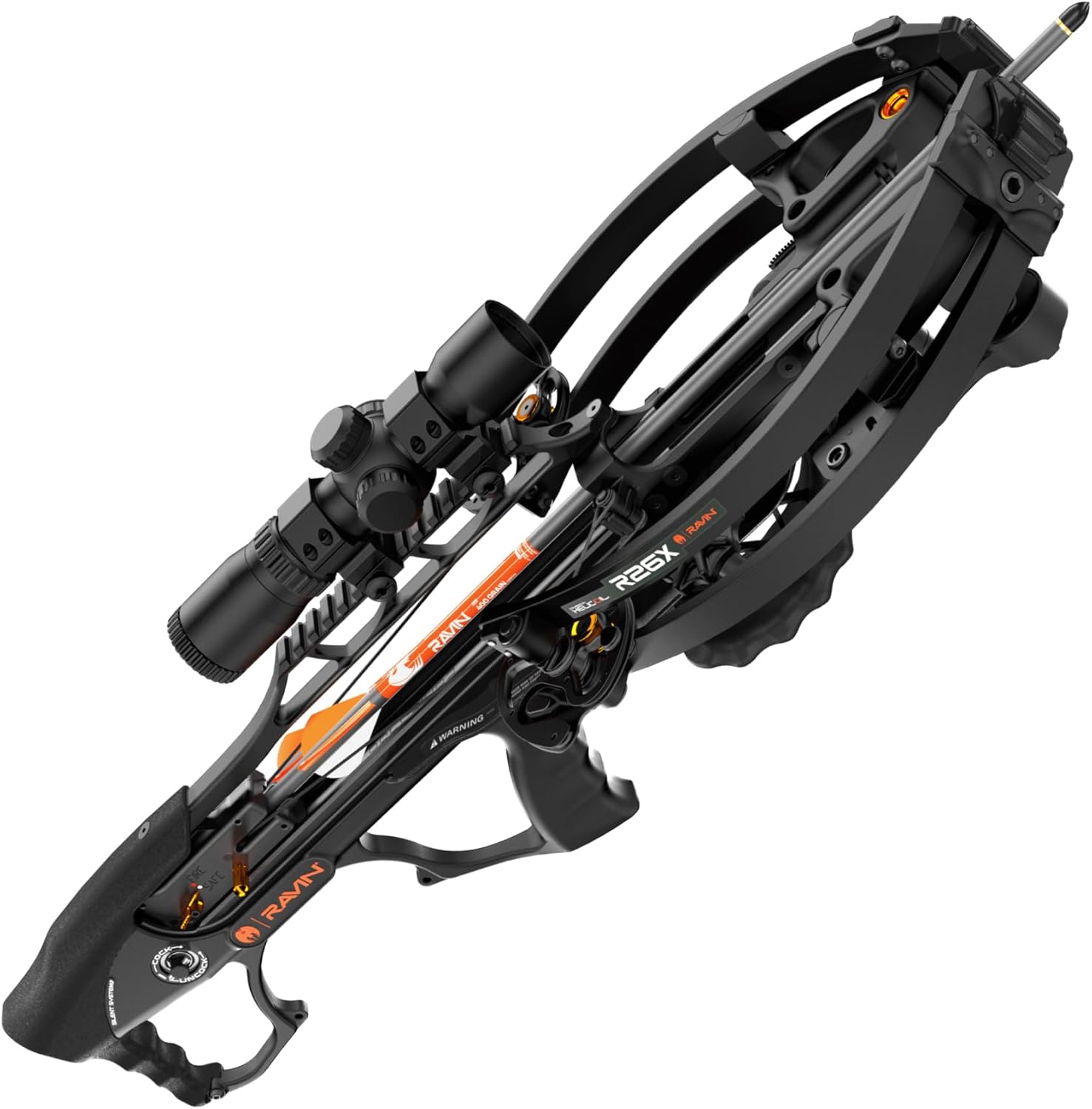
Ravin R26X:
This model combines 400 FPS (feet per second) speed with a super compact design. It’s only 5.75 inches wide when cocked, which means you can handle it easily, even in tight spots like ground blinds or between tree branches.
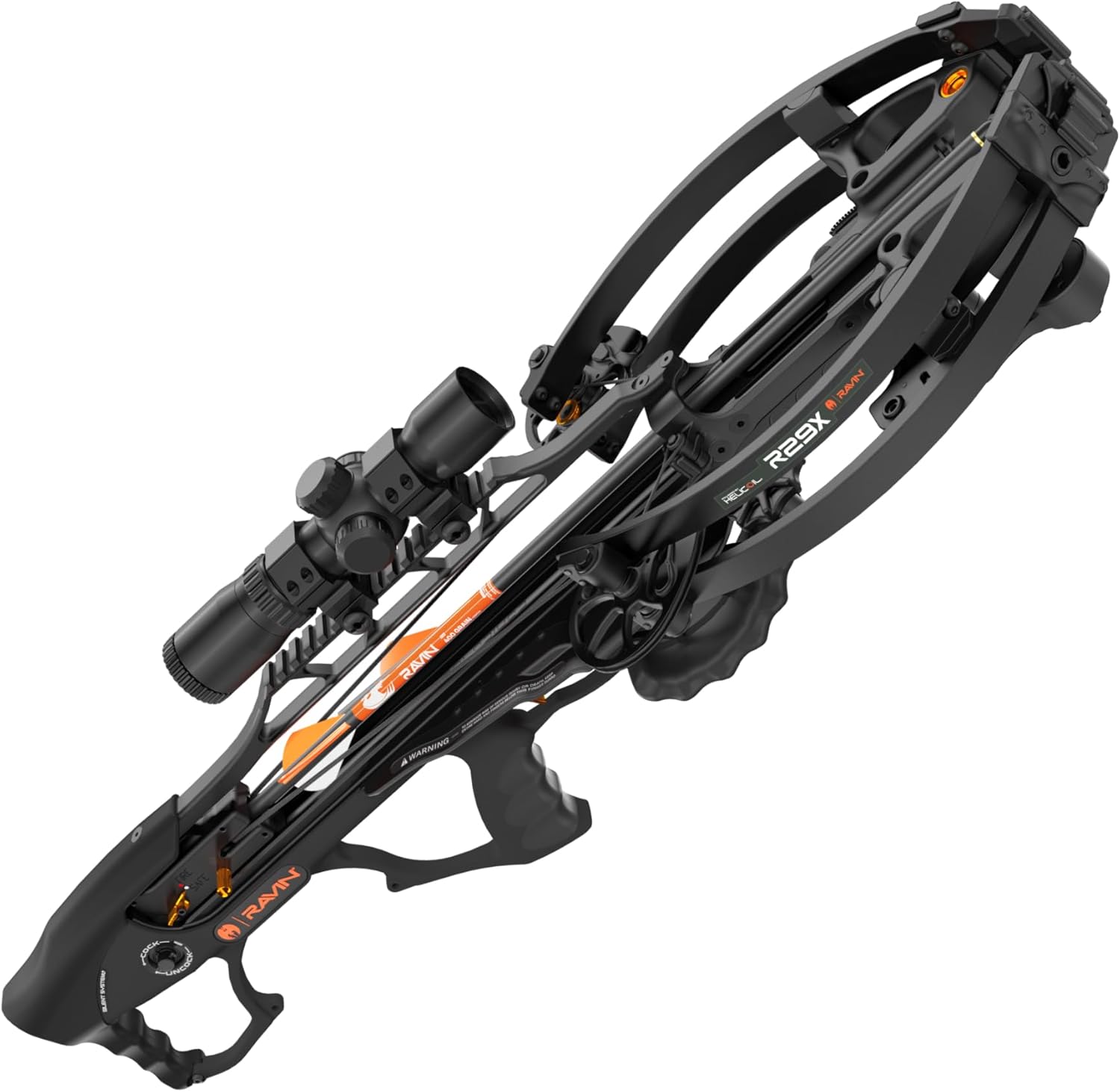
Ravin R29X:
I found this one to be a great middle ground. It’s a bit larger and gives you more speed (450 FPS), but it’s still easy to maneuver and holds steady. The silent cocking feature is a real bonus in situations where you don’t want to spook any animals nearby.
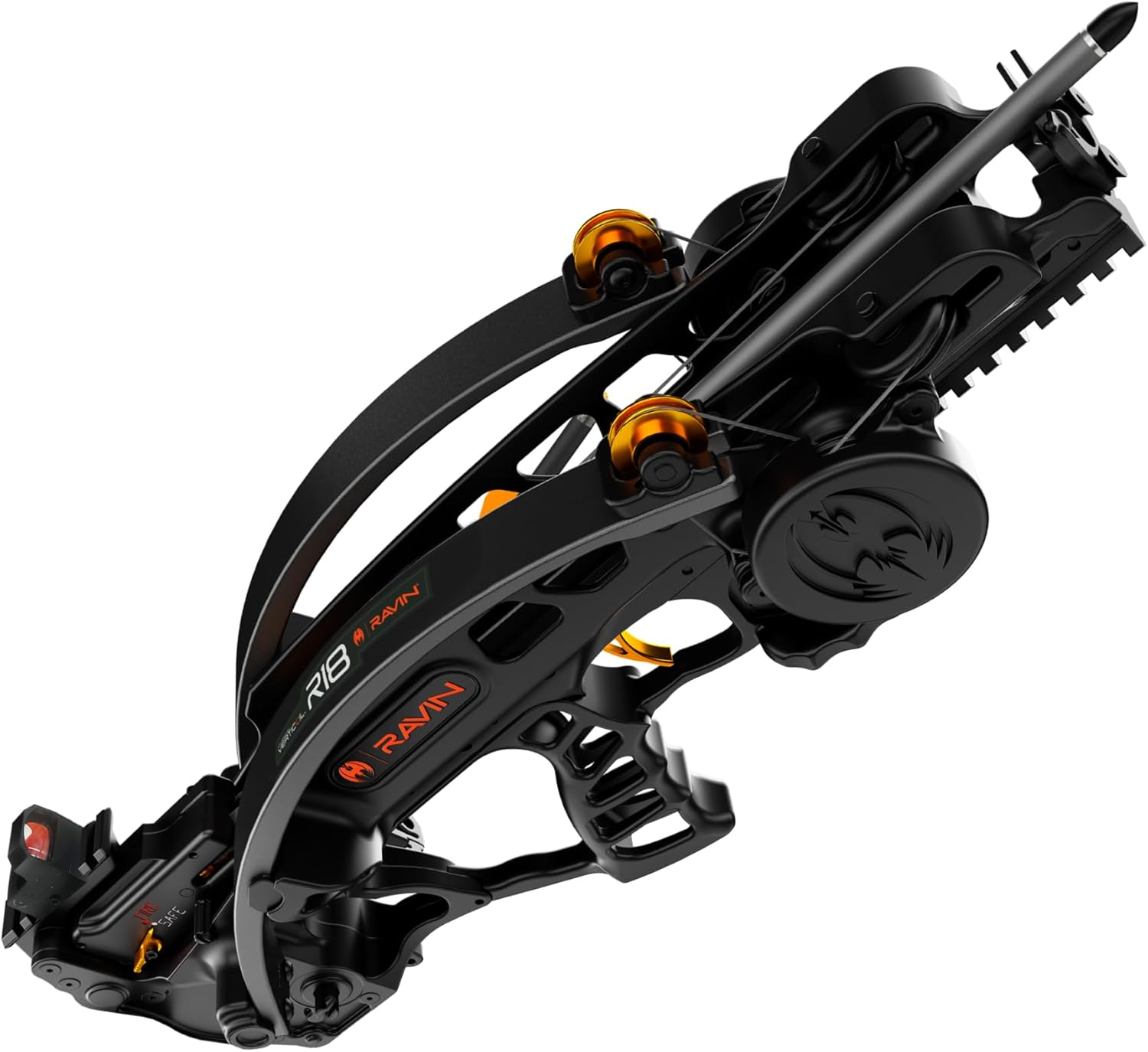
Ravin R18:
With a vertical limb design and a width under 5 inches when cocked, this is hands down the most portable crossbow I’ve used. Even at 330 FPS, it’s fast enough for most hunting and target practice needs while staying very easy to handle for smaller shooters or those who hate carrying bulk.
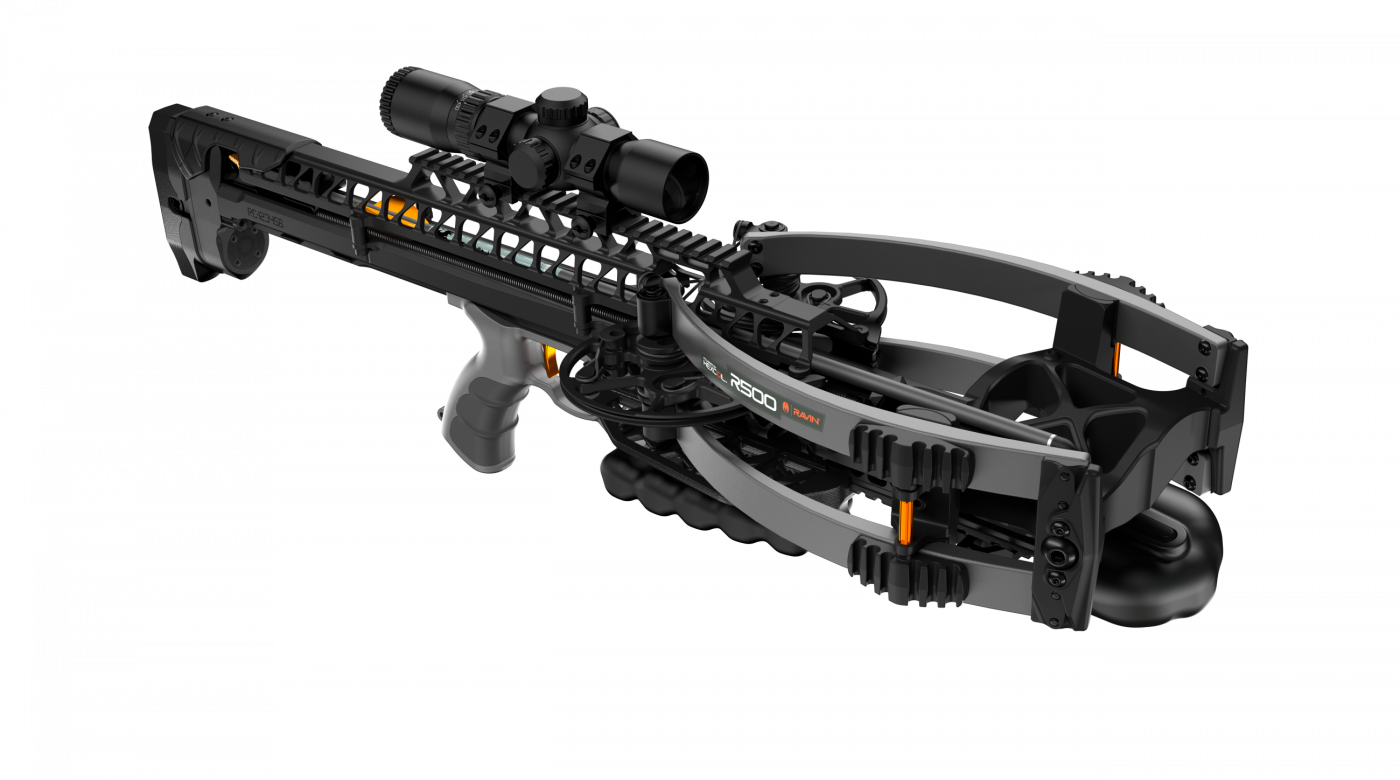
Ravin R500 (and R500E)
If you crave more power after getting some experience, the R500 series brings a whole new level of performance. The R500E even has an electric cocking system, so you don’t have to crank by hand. These are strong picks for bigger game or longer-range shooting, though they might be more than a true beginner needs.
Any of these models can help build confidence, and you’ll get plenty of online support, accessories, and guides to make the learning curve smoother. For someone about to get into crossbow hunting or target shooting, having this combination of support, easy handling, and reliability will set you up for success as you grow your skills.
How to Start Shooting Your Ravin Crossbow
Getting the hang of crossbow shooting feels a lot easier when you break it down into smaller steps. I’ve learned that building good habits from the start saves a lot of hassle down the road. Here’s a straightforward approach to getting started with your new Ravin crossbow:
- Read the Manual: Take time to look through the manual that comes with your crossbow. It covers basic operation, safety rules, and assembly details you don’t want to miss.
- Set Up Your Crossbow: Follow the assembly steps closely, making sure the bowstring and cables are properly installed. Use the included scope or upgrade to a more advanced one, so every shot is easier to line up.
- Practice Cocking and Loading: Use the VersaDraw system or crank handle to cock your Ravin. I like to practice this a few times without arrows, just to get a smooth routine down. Load only Ravin-approved bolts with clip-on nocks, as this prevents odd misfires or warranty issues.
- Sighting In: Use a well-placed target at 20 yards and adjust your scope until your shots are grouping well. Starting at a short distance keeps the process low stress, and you’ll build up to longer shots over time. If possible, shoot in different lighting conditions so you get used to how the scope performs.
- Shoot Regularly and Track Your Progress: I noticed my skills improved fastest with short, focused practice sessions every few days. This helps keep the basics sharp and builds muscle memory. Consider keeping a simple shooting log to track your results and see how your accuracy improves over time. Writing down details like weather, distance, and group size helped me spot patterns, which made my training more effective.
Don’t rush. Treat the first few sessions as learning experiences. Every small improvement matters, and keeping safety in mind helps make the whole experience much more fun. If possible, consider teaming up with an experienced shooter or taking a beginner’s workshop at a local archery range. Getting real-time feedback can make a huge difference in those early sessions.
Essential Tips and Accessories for Beginners
Starting out with Ravin crossbows goes beyond just the bow itself. The right accessories and shooting habits can make a difference. Here are a few things you should know early on:
- Bolt Selection: I use only Ravin-branded or approved bolts. They are designed specifically for these crossbows and help prevent dry fires. Your arrows should weigh at least 400 grains, including the broadhead tip, to protect the limbs and string. Using incorrect bolts can damage the crossbow and void the warranty, so this is a rule worth sticking to.
- Broadheads: When I’m targeting deer or similarly sized game, Ravin recommends using their mechanical or hybrid broadheads. Larger fixed-blade types can sometimes create accuracy issues or put extra strain on the bow.
- Safety Gear: Safety glasses, finger protection, and a sturdy shooting target made for crossbows all help keep things safe and practical. I’ve found that investing in a good target outlasts cheaper options and saves time and money long term. It also helps to keep a first aid kit nearby, just in case minor scrapes happen during your sessions.
- Maintenance Kit: Regularly check the string, cables, and serving for wear. I keep rail lube and string wax handy to increase the lifetime and prevent damage. Ravin recommends changing strings about every two years, but I usually check in with my local shop every year for peace of mind.
- Storage Solutions: Use a hard or padded case to store your crossbow safely when not in use. Storing it in a dry, cool place prevents moisture buildup and helps all components last longer. If you travel with your crossbow for hunting, a case also protects it from bumps and knocks in the field. Adding silica gel packs to your storage case can help ward off unwanted moisture as well.
Handling bolts and parts gently and storing the crossbow in a dry, safe place helps avoid unnecessary breakdowns or safety risks. Pay close attention to the trigger area and moving parts—keep them clean from dust or grit. Even small bits of dirt can affect reliability over time.
What Should Beginners Think About Before Buying?
Before spending money on a Ravin crossbow, I always encourage people to consider a few points. These details help newcomers make choices that fit their needs and budgets:
- Intended Use: If you’re planning to mostly do backyard shooting or target practice, you might pick a lighter, smaller model. For hunting bigger game, a higher-powered model could be a better fit. Take note of where you’ll be shooting—tight spaces might need a slimmer design.
- Physical Fit: Ravin crossbows are built for many body types, but holding and aiming them can feel different based on your height or arm length. Try out a few in a local shop, if possible, to get a feel for what’s most comfortable. Test how the crossbow balances while you aim, as a comfortable hold will help reduce fatigue.
- Budget: While Ravin crossbows tend to be a bit pricier, the added technology, comfort, and warranty support can be worth the investment. I always factor in costs for bolts, broadheads, and a case when working out my budget. Take into account the cost of regular maintenance or future upgrades. Sometimes waiting for sales or certified refurbished options can make a high-end model more affordable.
- Legal and Safety Aspects: Double-check your state or country’s rules about crossbow ownership, transport, and hunting eligibility. Following the law is super important. This can also affect what accessories or modifications are allowed. Some areas have special seasons or licensing for crossbow use, so research a bit before buying. If you travel to hunt, check regulations at your destination as well as at home.
Reviewing these details up front saves time and money, avoiding regrets and unnecessary returns down the line. Take some time to read online reviews or ask questions in crossbow forums to hear real users’ experiences before making your choice.
Frequently Asked Questions
New Ravin crossbow owners often ask similar questions, and I ran into these myself. Here are answers based on my personal experience and Ravin’s recommendations:
What kind of broadheads should I use with my Ravin crossbow?
I stick with Ravin-approved broadheads, usually mechanical or hybrid versions that are rated for crossbow speed. This is safer and keeps shots consistent.
Can I use any arrow, or do I need special bolts?
Only use Ravin-branded or Ravin-approved bolts with clip-on nocks. Other arrows could result in misfires or void your warranty. I learned this the hard way and had to replace a set of limbs once.
How often should I replace my crossbow strings?
Ravin says every two years, but if you notice wear or shoot a lot, have a shop check yearly. I replace mine about every 18 months to err on the safe side.
Are Ravin crossbows legal for hunting in my area?
Laws can vary, so I check state wildlife department websites or local archery clubs before heading out. It’s really important to stay compliant.
Getting the Most from Your Ravin Crossbow
Picking the right Ravin crossbow, taking care of it, and learning the basics are key to a good start. Pairing your crossbow with the right arrows and accessories gives a boost to your performance and enjoyment with every shot. Over time, your confidence grows, and your skills sharpen with ongoing practice and attention to detail.
The quiet power and precision of a Ravin can add a lot of fun and satisfaction to your hunting or target shooting routine. Whether you stick with backyard targets or hit the woods, having a tool you trust makes each outing more rewarding.
With patience, safe handling, and a bit of practice, any beginner can quickly feel at home with a Ravin crossbow. I’ve seen it transform many new shooters into steady, capable archers, and there’s nothing quite like the feeling of seeing your accuracy improve shot by shot.
Most Recent Articles:
- 14 Tips And Tactics For Public Land Mule Deer Hunting

- 6 Features of Waterproof Ground Blinds For Wet-condition Elk Hunting

- 4 of the Best DIY Elk Hunting Areas In Colorado

- 8 Tips for Choosing the Best DIY Elk Hunting States

- 5 Hunting Gear Packing List Essentials For DIY Trips

- 7 Tips For Hunting The Elk Migration

As always, stay safe, enjoy the journey, and please try to leave it cleaner than you found it. If you have any comments, questions, ideas, or suggestions, please leave them in the comment section below, and I’ll get back to you ASAP. You can follow us on YouTube: Man Art Creations for videos of our DIY Adventures.
P.S. Thanks so much for checking out our blog; we really appreciate it. Just so you know, we may receive a commission if you click on some of the links that appear on our site. This helps us keep our content free and up-to-date for everyone. We appreciate your support!
